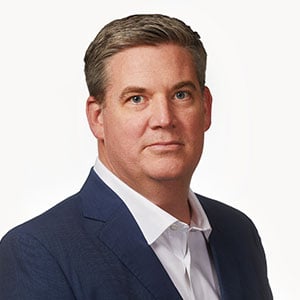After a turbulent period, emerging markets have delivered double-digit returns in recent years. Private investments in emerging markets offer a way to diversify beyond the public markets and, in general, have also been a source of strong returns. This Commonfund Forum panel discussion focused on the current opportunity set and how private capital managers are selectively tapping into emerging market growth. The panel was moderated by Commonfund Capital Managing Director Mark Hoeing. The panelists were: Neil Milne, Managing Partner, Abris Capital Partners; Jean Ide Gerard, Partner, Linzor Capital Partners; and Miriam Schmitter, PhD, Managing Director, Commonfund Capital. Comments have been edited for clarity and length.
Mark Hoeing: At the opening of Commonfund Forum, we conducted a poll in which we asked which private capital strategies appear to offer today’s greatest opportunity. Forty-nine percent of respondents cited emerging markets. We tend to share that optimism. Commonfund Capital made its first investment in emerging market private capital in 1994, and we continue today to emphasize small- and mid-sized companies that are growing quickly. Generally, there is not a lot of capital to finance the growth of these businesses, which provides an opportunity for skilled private equity managers. Certainly, we would include today’s panelists among those managers. So, let us start by asking each about their investment strategy.
Neil Milne: Abris Capital is a Central Europe-focused midmarket fund. In the context of our firm, that means equity deals in the range of €30 to €80 million. We’re investing across Central and Eastern Europe, though we do focus principally on the larger, more successful economies, meaning that approximately half our fund is in Poland, another 25 percent is in Romania with the rest spread between the Baltics, the Czech Republic and other opportunities as we identify them. We are a control manager, so we insist on a majority position in all of our companies. We tend to be sector neutral, although we do have some favorites at the present time.
Jean Ide Gerard: Our firm is focused on Spanish-speaking Latin America, and maintains offices in Mexico, Colombia, Chile and Argentina. We specialize in middle market private equity investments in the range of $30 to $100 million, and although we also favor control positions we have done some significant minorities. In terms of sectors, we’re opportunistic, but tend to concentrate on those verticals that we’ve developed over time and where we’ve got good experience: financial institutions, education, health care and retail.
Miriam Schmitter: We take a dynamic approach in emerging markets, combining top-down analysis, where we see opportunities from a geographic perspective, and then bottom-up, where we find the best manager set. It could be that we really like a country but don’t go there because there’s no manager we like. Also depending on the opportunity set in various countries or regions, we may back an early stage business—perhaps on the technology side—or we could go for more of a buyout approach, as is the case in Latin America and Central and Eastern Europe. China has been playing a very big part in our portfolios, and the managers there have done quite well for us. China has taken on a leadership position in the technology space and has also been quite stable from a currency perspective. We invest a bit India, typically on the early-stage side, and some in Africa.

— Miriam Schmitter
Hoeing: You didn’t mention Russia.
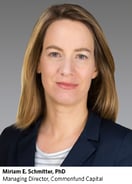 Schmitter: We’re quite focused on political and macro risk. There are some places where we’ve chosen not to invest because we don’t feel the potential rewards outweigh the risks. Russia would be one of those places, and Turkey more recently has become another.
Schmitter: We’re quite focused on political and macro risk. There are some places where we’ve chosen not to invest because we don’t feel the potential rewards outweigh the risks. Russia would be one of those places, and Turkey more recently has become another.
Hoeing: Jean, what’s it like on the ground now in Mexico, in particular with respect to trade wars and protectionism?
Gerard: To take a step back, one should note how countries in Latin America, and Mexico in particular, have changed. Thirty years ago, there was hyperinflation. There were no local credit markets. You had triple-digit devaluation of the currency, protectionism was widespread and you had one party ruling the country for 70 years. In other words, you had everything we avoid today when choosing the countries in which to invest.
Today, Mexico is a functioning democracy with different parties getting elected. You’ve got stable inflation between 3 and 6 percent per year. You’ve got a debt-to-GDP ratio that is reasonable. You’ve got a big local credit market, and you have a large local bank market available for long-term funding. And you’ve got a currency that is the sixth or seventh most-traded in the world. NAFTA opened the economy. At the beginning it was a very complicated process and a lot of companies went out of business because the competitive landscape changed so suddenly. But now you have companies that are working well and able to make money in a very global and competitive environment.
So, coming back to the question, what we see in Mexico are competitive advantages compared to other Latin American countries. Mexican manufactured goods account for 80 percent of its exports. It’s not commodities like oil. And those manufactured goods in reality are part of a very embedded value chain with the U.S. So, for example, for every dollar that Mexico exports to the U.S., 40 cents worth of imports come from the U.S. to Mexico. When you look at China, it’s 4 cents. That is, for every dollar China exports to the U.S., China imports 4 cents from the U.S. That really shows how embedded Mexico is with the U.S. from a manufacturing point of view. In addition, 90 percent of U.S. Fortune 500 companies have operations in Mexico.
Based on hourly labor costs, Mexico has a 5X or 6X advantage over the U.S. That is not going to change anytime soon. Tariffs or NAFTA are not going to change that fact. Therefore, Mexico will continue manufacturing and exporting, and we think that in the end it makes sense for the U.S., Canada and Mexico to continue working together as a bloc to gain competitiveness against other regions of the world.
Hoeing: Neil, from your perspective, what’s the macro thinking regarding your region?
Milne: In my time in Central and Eastern Europe, there have been two transformative stages. The first was when the leading countries of the region joined the European Union. When we’re talking about Poland or Romania—or any of the leading countries in the region now—it is clear that they are active and, in most cases, enthusiastic members of the EU. That membership imposes somewhat of an economic straightjacket around those countries. So, our investment strategy is very much to focus on those larger economies where we’re seeing a developing midmarket and where there is oversight of the economy. That minimizes currency volatility, and that will help cap any excess indebtedness either at the country or bank level.
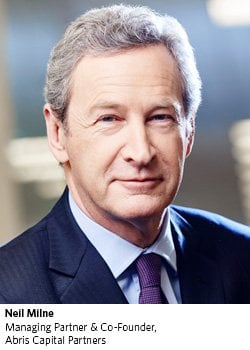 The other transformative step has been at the portfolio company level, and that is the 180-degree turn that many businesses have made from exporting into Russia and the east and move instead toward Western Europe. That has been driven largely by necessity. There has been a series of Russian crises over the years that have caused export markets to evaporate for Central European companies. For example, the largest export market for Poland today is Germany. Most of the German automotive businesses are fed directly by Polish component suppliers. We had a Polish portfolio company called Alumetal, a secondary aluminum producer that turned scrap into component parts that it sold to Mercedes, Audi and BMW. There’s now a very tight interaction between export-focused Polish businesses and the supply chain supporting Germany, which in turn exports to China and other countries globally.
The other transformative step has been at the portfolio company level, and that is the 180-degree turn that many businesses have made from exporting into Russia and the east and move instead toward Western Europe. That has been driven largely by necessity. There has been a series of Russian crises over the years that have caused export markets to evaporate for Central European companies. For example, the largest export market for Poland today is Germany. Most of the German automotive businesses are fed directly by Polish component suppliers. We had a Polish portfolio company called Alumetal, a secondary aluminum producer that turned scrap into component parts that it sold to Mercedes, Audi and BMW. There’s now a very tight interaction between export-focused Polish businesses and the supply chain supporting Germany, which in turn exports to China and other countries globally.
Just a brief comment on the political side because there is some controversy in Central and Eastern Europe: What is sometimes overlooked, at least in the case of Poland, is that the country is very firmly pro-EU. No matter what the politicians may say, Poland remains a strong and enthusiastic member of the European Union.
Hoeing: Given the recent announcement of aluminum tariffs by the U.S., what impact may that have on European suppliers?
Milne: Fortunately, we exited that investment through an IPO a couple of years ago. The company does not export aluminum, but the cars into which its aluminum goes are exported to the U.S., so there may be some economic consequence. We grew the company from number 12 in Europe when we bought it to Europe’s third-largest aluminum producer at the time of the IPO.

— Neil Milne
Hoeing: Are there sectors you favor today?
Milne: A lot of midmarket transactions in our region are in the consumer services sector because it is attractive to entrepreneurs and not government controlled. One example on the business services side is a parcel delivery service that we expanded into consumer deliveries just as Internet retailing was exploding. We grew it over time and sold it to the French postal service for 13½ times EBITDA1, having bought it at 6 times EBITDA. We liked the idea so much that we bought a similar business in Romania, rolled it up with three other local businesses and we are currently in the process of a sale that should generate between 4X and 5X on our investment. So, consumers in our region have now got the financial capability and the desire to plug into the products and services that any western economy would have.
Hoeing: Let’s jump to Mexico and Latin America. Jean, where are you focused in terms of investment opportunities today?
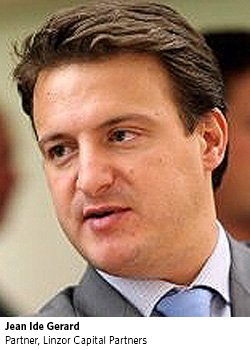
Gerard: We take a top-down approach to the countries we feel comfortable investing in—Mexico, Columbia, Peru and Chile—as I said earlier. Then we take a bottom-up approach to identify sector opportunities. The middle class is growing rapidly in these countries and increasing disposable income is driving consumption. As a result, we are active in the financial sector, to cite one example. We bought a corporate orphan from GE a few years ago that was in the dry van leasing business, something that was attractive based on the need to move goods in a growing economy. To give you another example, we’re also looking at deals in education. Large segments of the workforce in Mexico do not have higher degrees, yet the demand is growing along with the rise of the middle class. One of our portfolio companies offers a fully online platform, one of the first in region. The traditional infrastructure in emerging markets has not been built to provide educational services, so business models that use the cloud and software as a service are accelerating based on their accessibility and efficiency.
Hoeing: Miriam, China has a considerable weight in Commonfund Capital’s portfolios today. What are the segments you’re focused on?
Schmitter: Ten years ago, China was very much about this simple unlocking of the consumer story, so you saw different types of retail chains and restaurants being created. Most of that opportunity has been tapped. Thus, for us today it’s very much a story about technology-driven leapfrogging, venture capital companies backing very innovative business models that develop just as they are in the west—for example, app-driven food delivery. Electric vehicles are getting a big push in China, and one portfolio company lets you drive into a station where your battery is switched so you don’t have to take the time to recharge. It’s just like filling your tank.

— Jean Ide Gerard
Hoeing: Before closing, perhaps we could touch on risk and how you manage risk in emerging markets.
Milne: As I said, our fundamental strategy is control, and we think that is a risk mitigator. No matter how tight the shareholder agreement might be, or the legal documents are, as a minority investor the ability to change management or to change strategy quickly is always challenging. It’s also about selecting the right sector—making sure that that’s an area that has strong underlying growth potential and avoiding sectors that are burdened with interference from government agencies. We try to find businesses that have the scale and level of profitability that give us comfort that even in a year in which profits decline we are confident that the underlying business is sound. Profits may decline for various reasons, but it’s not going to be anything too serious.
Fortunately, in our region we now have a very deep pool of management talent, not to mention all the consulting firms, auditors and related service providers. And I would also say that the competitive position of private equity in general is dramatically better than it was 10 years ago in that we have a plethora of opportunities. We have a real mismatch between availability of opportunities and availability of capital, and that allows us to be highly selective in terms of the businesses we buy.
Gerard: I agree with what Neil says. For us, it’s all about being selective and screening around 150 companies a year—but investing in just a tiny fraction of them. We devote a lot of time to due diligence and analyzing the opportunity and even fixing some of the problems before doing the investments. For example, of the last two deals we did in the education space, the first took 1.5 years to complete. Why? Because it was a family-owned company that had a lot of issues that needed to be fixed. The family was committed to selling, but wanted a serious partner who would walk with them through the process and help them make it to the finish line. In this particular case, it meant that we had to fix a lot of problems for them before we even invested in the company. We show these companies that we are a reliable partner who will do the hard work.
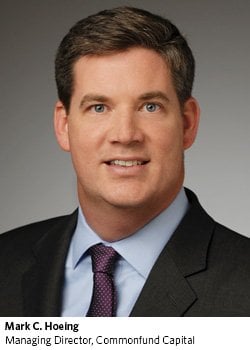
Hoeing: I should mention that for Abris and Linzor, a common denominator is principals who do the work and who have substantial personal general partner financial commitments to the funds they manage. Miriam, wrap it us for us, please.
Schmitter: Diversification is an important risk reducer. Frequently, these markets are not in sync. As an example, Latin America has been through a different period, especially from a currency standpoint, compared with markets like China or Central and Eastern Europe. To some extent, we’re also trying to be contrarian or at least not too pro-cyclical. I just mentioned Latin America. There might be a temptation to step away, but we certainly wouldn't do that because of the great buying opportunities we’re seeing.
Mark touched on alignment of interests. We want to back managers with skin in the game so that they’re aligned on the downside and not just for the carry on the upside, and that they create genuine value and do not rely on management fees.
We’re also very focused on backing managers who raise the right amount of capital for the respective market segment that they are addressing because many of these markets can be quite small. If you’ve got two or three players with too much capital, it distorts the market and the deals won’t be as disciplined as you’d like them to be.
